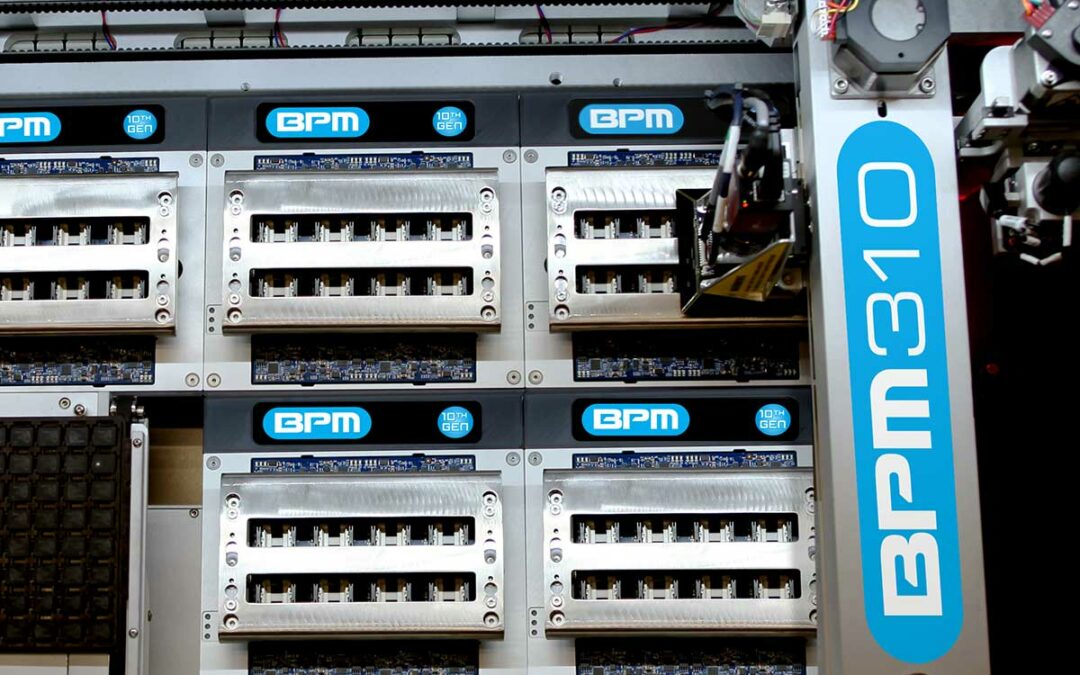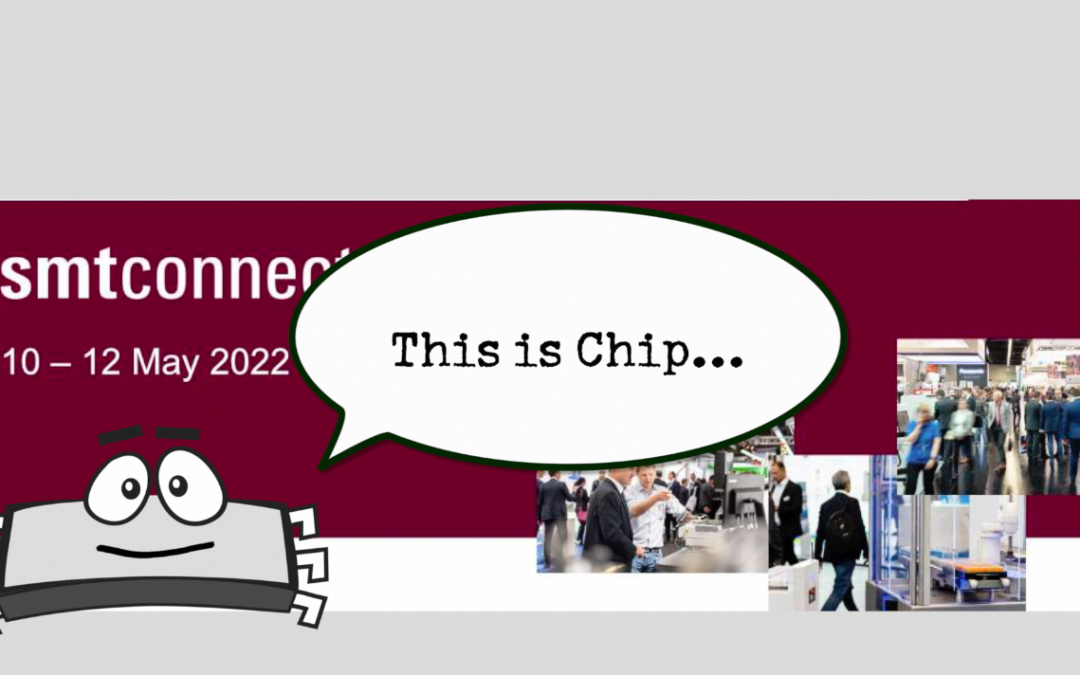
by Scott Bronstad | May 11, 2023 | Events, Trade Shows, Video
Unveiling the Future of Programming with the BPM310
Join BPM Microsystems on an exciting journey through SMTconnect 2023 in Nuremberg, Germany. In this video, we highlight the stand-out moments from BPM Microsystems’ presence at the trade show. Witness the exceptional interest around our star performer, the BPM310 automated programmer, and catch a glimpse of the engaging live demonstrations that left industry professionals intrigued and impressed.
Hosted by our lovable mascot, Chip, this video encapsulates the bustling atmosphere, the fruitful conversations, and the high-quality leads generated during the event. Don’t miss out on this behind-the-scenes look at how we’re shaping the future of programming at BPM Microsystems.
Transcript: “This is Chip, your friendly BPM Mascot, reporting live from SMTconnect in Nuremberg Germany.
“It’s been an incredible few days here! The turnout has been fantastic, with a steady flow of visitors drawn to our cutting-edge technologies, and the chance to win some pretty cool prizes by spinning the wheel!
“Our BPM310 automated programmer has truly been in the spotlight. We’ve hosted some engaging demonstrations, highlighting its unrivaled speed, precision, and user-friendly interface.
“And the reactions? Absolutely positive! Industry professionals from around the globe have been impressed by the BPM310’s capabilities, leading to valuable discussions and inquiries.
“But it’s not just about the tech, it’s about the people too. We’ve had the pleasure of connecting with many potential partners and clients.
“Here at BPM Microsystems, we’re not just building machines, we’re shaping the future of programming. And based on the enthusiasm here at SMTconnect, the future is indeed promising.
“This is Chip, saying, ‘Danke, Nürnberg!’, and keep on programming!”

by Scott Bronstad | May 5, 2023 | How To, Technology
How Automated Programming Aligns with Your Vertical Manufacturing Strategy
Why In-House Device Programming is the Future of Vertical Manufacturing
Learn how in-house programming can improve cost, time to market, and quality. See how an automated programming system can pay for itself compared to outsourcing.
Programmable devices power our modern world, from smartphones to computers to electric cars. But have you ever stopped to think about how these tiny chips are programmed and manufactured? In recent years, there has been a growing trend toward in-house offline device programming as part of the movement toward vertical manufacturing. In this article, we will explore the advantages of this approach, with a focus on cost per device, time to market, and quality.
Device Programming and Vertical Manufacturing
 To understand the benefits of in-house programming and vertical manufacturing, let’s start with a real-world example. Imagine a company that designs and manufactures sensor assemblies for the automotive industry. The company relies on programmable devices to power its assembly, and it needs to program these devices with custom firmware before they can be integrated into the product.
To understand the benefits of in-house programming and vertical manufacturing, let’s start with a real-world example. Imagine a company that designs and manufactures sensor assemblies for the automotive industry. The company relies on programmable devices to power its assembly, and it needs to program these devices with custom firmware before they can be integrated into the product.
In the past, the company outsourced the programming of these devices to a third-party supplier. This meant it had to wait for the supplier to program the devices and ship them back, which added time and cost to the manufacturing process. It also meant that the company had limited control over the quality of the programming and the security of its intellectual property. What’s worse, periodic and sometimes rapid design changes mean the devices in transit have to be reprogrammed, delaying production and ballooning costs.
Now, the company has invested in in-house off-line device programming. This means that it can program the devices themselves “just-in-time” using its own equipment and personnel, before integrating them into the sensor assembly. Let’s take a closer look at the advantages of this approach.
Cost per device
One of the biggest advantages of in-house off-line device programming is cost savings. By bringing the programming process in-house, companies can eliminate the markup third-party suppliers charge for their services. This can translate into significant savings, especially for companies that produce high volumes of devices.
In our example, the company can now program its own devices for a fraction of the cost of outsourcing the process. This has helped to improve its profit margins and make it more competitive in the market.
Time to market
Another critical advantage of in-house programming is faster time to market. By eliminating the need to wait for third-party suppliers, companies can speed up their manufacturing process and get their products to market more quickly. This can be especially important in fast-paced industries where timing is everything.
In our example, the company can now program its devices on demand, without having to wait for a supplier to do it for them. This has helped to reduce its lead times and ensure that it can meet customer demand in a timely manner. Plus, it reduces the likelihood of re-programming when designs change because the parts are programmed within days or hours before integration into the product.
Quality and Security
 Finally, in-house programming can improve the quality of the programming and the security of the intellectual property. When a company outsources its programming to a third-party supplier, it loses some control over the quality of the programming and the security of its intellectual property. In-house programming, on the other hand, allows companies to maintain complete control over the process and ensure that their devices are programmed to the highest standards. And, they maintain complete traceability, controlling the exact quantity of devices programmed.
Finally, in-house programming can improve the quality of the programming and the security of the intellectual property. When a company outsources its programming to a third-party supplier, it loses some control over the quality of the programming and the security of its intellectual property. In-house programming, on the other hand, allows companies to maintain complete control over the process and ensure that their devices are programmed to the highest standards. And, they maintain complete traceability, controlling the exact quantity of devices programmed.
In our example, the company can now ensure that its devices are programmed to their exact specifications without relying on a third-party supplier. This has helped to improve the quality of its products and protect its intellectual property.
A system that pays for itself
 Now, let’s take a closer look at how an offline automated programming system can pay for itself compared to outsourcing the device programming piece. An offline automated programming system can significantly reduce the cost of device programming while improving the quality and speed of the manufacturing process. By eliminating manual programming, an automated system can reduce the likelihood of human error and improve overall efficiency. In addition, the system can be programmed to automatically detect and correct errors, further reducing the likelihood of defects.
Now, let’s take a closer look at how an offline automated programming system can pay for itself compared to outsourcing the device programming piece. An offline automated programming system can significantly reduce the cost of device programming while improving the quality and speed of the manufacturing process. By eliminating manual programming, an automated system can reduce the likelihood of human error and improve overall efficiency. In addition, the system can be programmed to automatically detect and correct errors, further reducing the likelihood of defects.
Furthermore, the advantages of vertically integrating device programming into your factory process extend beyond the cost savings and quality improvements. By having complete control over the programming process, companies can better protect their intellectual property and trade secrets. They can also more easily adapt to changes in customer demand or industry standards since they are not dependent on a third-party supplier.
In conclusion, in-house off-line device programming compliments the trend towards increased vertical manufacturing capability. Especially when paired with an automated programming system, this value-add process can offer significant advantages to companies in terms of cost savings, faster time to market, improved quality, and greater control over the manufacturing process. These benefits can help companies stay competitive in a rapidly changing market and continue to deliver innovative products to their customers while safeguarding their intellectual property.
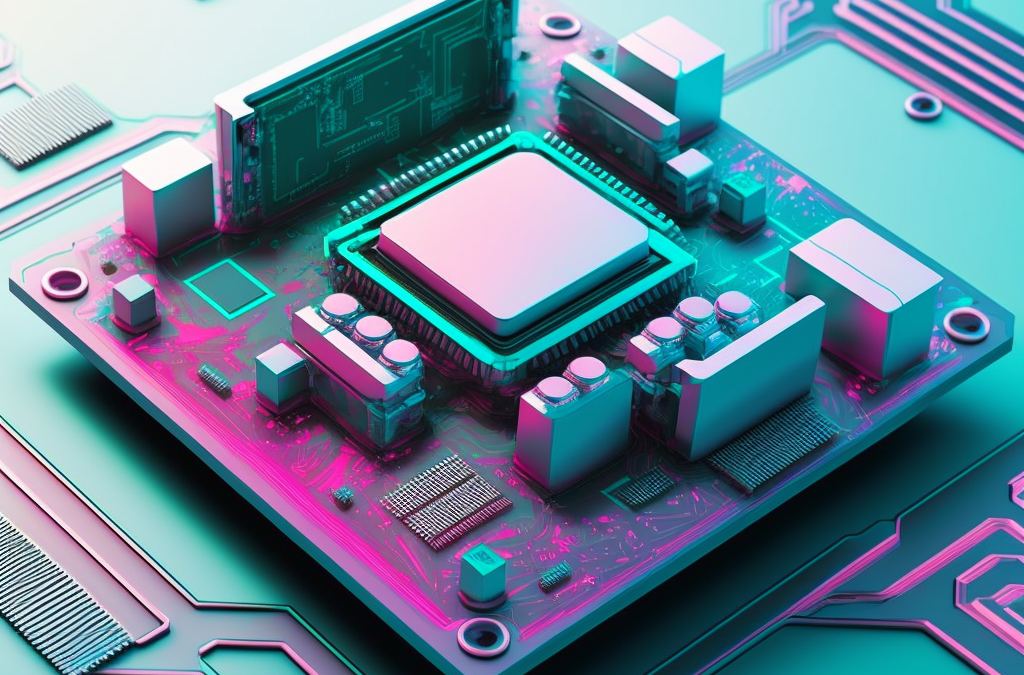
by Scott Bronstad | Apr 28, 2023 | How To
In-House Programming: Crucial Process in Electronic Device Manufacturing
Semiconductor device programming is a crucial process in the manufacturing of electronic devices. It involves the creation of firmware that runs the device and enables it to perform various functions. The firmware is essentially the software that is installed on the device’s microcontroller or microprocessor, and it contains the code that controls the device’s operation.
Device programming is important because it determines how the device will function and how it will interact with other devices and systems. The firmware must be programmed correctly to ensure that the device operates as intended, and any errors in the programming can result in malfunctions or even device failure.
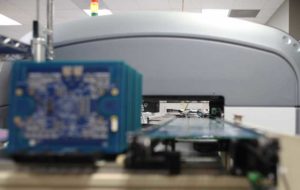
Circuit boards traveling down the SMT line at BPM Microsystems manufacturing facility in Houston Texas.
Why you should think about bringing device programming in-house
With the global supply chain becoming increasingly complex and vulnerable, many manufacturers are looking for ways to reduce their reliance on third-party providers. By bringing device programming in-house, manufacturers can have greater control over their supply chain and reduce the risk of delays or disruptions caused by external factors.
In-house programming facilities allow manufacturers to have complete control over the programming process, from design to testing and verification. This control can help manufacturers identify and resolve issues more quickly, reducing the risk of delays in the production process.
Additionally, by bringing semiconductor device programming in-house, manufacturers can reduce lead times and time-to-market. In-house programming facilities allow manufacturers to program devices on demand, reducing the need for large inventory stockpiles. This reduction in inventory can help manufacturers respond more quickly to changes in demand, ensuring that they can deliver products to market faster and with greater flexibility.
Challenges of In-House Device Programming
“I can’t afford to bring programming in-house”
For many years, outsourcing device programming has been the norm for most manufacturers. Outsourcing allows manufacturers to leverage the expertise of third-party providers with specialized equipment and personnel to perform programming services. Outsourcing can be a cost-effective option for small manufacturers who need to program only a few devices.
However, more manufacturers are now considering bringing semiconductor device programming in-house. In-house programming gives manufacturers more control over the programming process and allows them to tailor the programming to their specific needs. Additionally, in-house programming can be more cost-effective for larger manufacturers who need to program a large number of devices.
One way to overcome the challenges of in-house device programming is to use device programmers manufactured by BPM Microsystems. Their device programmers offer a range of benefits that can help manufacturers overcome the challenges of in-house programming.
BPM device programmers are designed to deliver consistent high-speed performance, accuracy, and speed, with on-the-fly alignment capabilities that guarantee fast, reliable programming. Additionally, their systems are designed to be easy to operate and maintain, maximizing uptime and productivity.
BPM programmers deliver return on investment in (usually) months, not years (see ROI article). One SMT manager described their BPM Automated Programming System (APS) as his “money printer.”
Outsourcing vs. In-House Programming
“I don’t have anyone with the technical expertise to run an in-house programmer”
In-house device programming offers numerous advantages, but manufacturers must also tackle certain challenges to establish a successful operation. Two primary concerns include costs and complexity. Establishing such an operation typically involves capital investment in specialized equipment and skilled personnel.
The programming setup process demands meticulousness and precision, as all input and output locations must be accurately “taught.” This can be a significant challenge even for experienced technicians, as an incorrect “teach” can result in wastage and failed operations.
BPM Microsystems: Transforming Challenges into Opportunities
For over three decades, BPM Microsystems has been a stalwart ally for manufacturers, helping them surmount these challenges and reap the benefits of in-house programming. Over the last three years, there has been a notable increase in smaller electronics manufacturers leveraging automated programmers, demonstrating the effectiveness of BPM’s solutions.
BPM Microsystems’ systems stand out for their efficiency and quick setup, thanks to their unique, patented WhisperTeach™ auto Z-teach technology. This innovation enables perfect setups in under 15 minutes, allowing you to start programming with the highest real-world throughput. Additionally, their universal site technology guarantees exceptional programming speeds with a single Generation of site technology, adeptly meeting your production demands.
When considering the Return on Investment (ROI), the value of BPM’s solutions becomes clear. While other systems require the expense of hiring and retaining a skilled technician, BPM Microsystems’ systems are designed for ease of use. They significantly reduce the need for specialist personnel, which translates to substantial cost savings over time. Although the initial investment in high-quality equipment might seem steep, the long-term benefits, including reduced labor costs and increased productivity, can offset these expenses.
BPM device programmers offer versatility and are upgrade-compatible with future device technology, ensuring your investment is future-proof. This access to cutting-edge programming capabilities, coupled with their award-winning support for systems, software, and sockets, delivers industry-leading assistance whenever needed. By choosing BPM Microsystems, manufacturers are not only overcoming the initial capital investment hurdle but also positioning themselves for considerable returns over time.
In conclusion, the robust design, ease of use, and upgrade compatibility of BPM’s device programmers provide a compelling solution for manufacturers looking to navigate the challenges of in-house device programming. Their investment in BPM Microsystems’ solutions not only safeguards their operations against future technological advancements but also promises a significant return on investment, making it a wise and profitable choice in the long run.


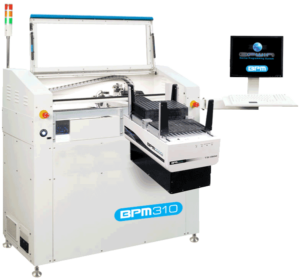 The BPM310, BPM Microsystems’ 10th Generation Automated Programmer, is expertly engineered for maximum throughput and adaptability. It boasts up to 6 fully universal programming sites, each with the capacity to host up to 8 sockets. This level of parallelism positions the BPM310 to deliver exceptional programming times, all within a remarkably compact footprint.
The BPM310, BPM Microsystems’ 10th Generation Automated Programmer, is expertly engineered for maximum throughput and adaptability. It boasts up to 6 fully universal programming sites, each with the capacity to host up to 8 sockets. This level of parallelism positions the BPM310 to deliver exceptional programming times, all within a remarkably compact footprint.
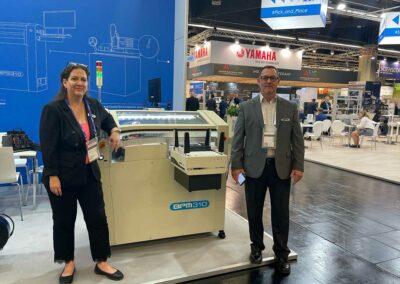
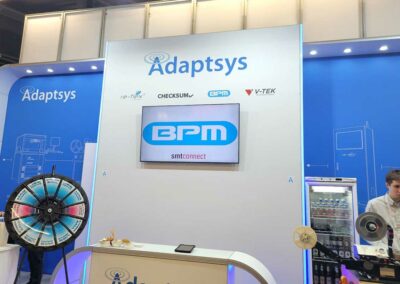


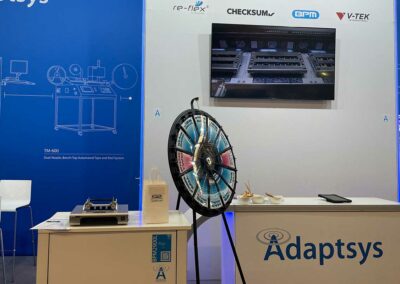
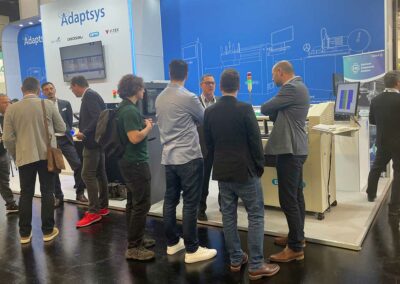

 Now, let’s take a closer look at how an offline automated programming system can pay for itself compared to outsourcing the device programming piece. An offline automated programming system can significantly reduce the cost of device programming while improving the quality and speed of the manufacturing process. By eliminating manual programming, an automated system can reduce the likelihood of human error and improve overall efficiency. In addition, the system can be programmed to automatically detect and correct errors, further reducing the likelihood of defects.
Now, let’s take a closer look at how an offline automated programming system can pay for itself compared to outsourcing the device programming piece. An offline automated programming system can significantly reduce the cost of device programming while improving the quality and speed of the manufacturing process. By eliminating manual programming, an automated system can reduce the likelihood of human error and improve overall efficiency. In addition, the system can be programmed to automatically detect and correct errors, further reducing the likelihood of defects.
